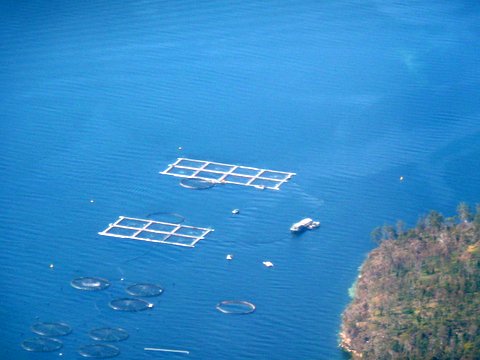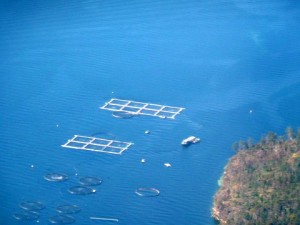Australia. The view of a salmon farm from our single engine plane high above the waters of Tasmania looks pretty cool and well, pristine. So why when I ask the restaurant server “is the salmon farmed or wild” do I order something else if the answer is farmed?
On researching, it turns out to be a hotly debated subject with lots of emotionally charged opinions including my own. As the fastest growing food production segment in the world (wow, I had no idea) with over 1.5 million tonnes (a tonne = 2,204 pounds) produced annually, it’s a lot of salmon!
So what’s wrong with ocean farmed salmon? Well, according to Whole Foods, nothing as long as it is farmed to their 36 page Quality Standard guide. OK, so if not, higher levels of PCB’s, lower levels of Omega 3’s, residual antibiotics used to fight disease and the use of genetically modified feed by some farmers for starters.
And what about environmental concerns? The spread of disease into wild populations, pollution, and the death of thousands of sea lions and seals by drowning in the netting or being killed by farmers protecting their fish are real issues. The good news, however, is the industry is improving dramatically and has started farming in inland closed system tanks which eliminate many of the problems. So next time I eat out, I’ll just stick with wild fish or maybe ask if the farmed fish is ocean raised or inland tank raised. Can’t wait to see the reaction to that question!


